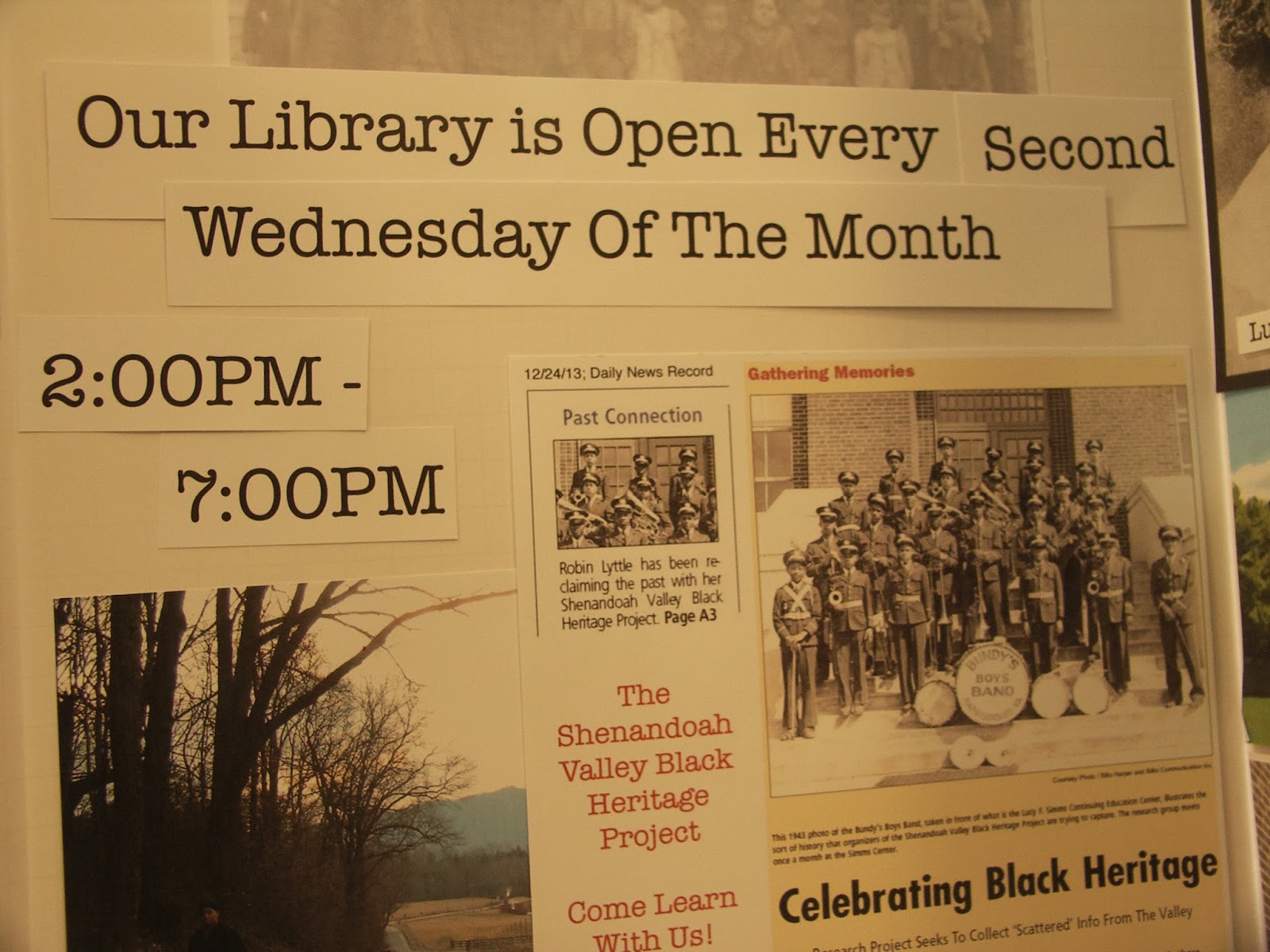Carter
G. Woodson (1875-1950) has been cited as the father of black history. This Virginia
Americans’
consideration of the African-American experience is only about fifty years old.
The experience of and the lessons
learned by many Americans during the Civil Rights Movement of the 1960s and the
advent of expanded mass communication as in the presentation of the television
series “Roots” resulted in widespread interest in black history among all
races. Today we find increased interest
and research in the experience of this population at the local level.
Antebellum black
history in Virginia
During the Civil
War years the local newspapers reported on runaway slaves, as well as issues
related to emancipation. The creation of
a personal-history database of US Colored Troops (USCT) from this area is an
on-going effort. The published list of
black troops is by state. Research to
identify the home counties of the individuals listed and to document their individual
histories continues. In Page County Shenandoah County Shenandoah Valley had
to leave to enlist adding to the challenge of the research task.
The Massanutten
Regional Library is also a repository of items important to the local negro
experience in the area. In addition to
extensive holdings relating to black history, the local library contributed to
the Library of Congress Veterans History Project– an effort to detail the
individual war experience of those who served in the armed forces from WWII to
the Persian Gulf War. The books on each
veteran, some of whom were black, are found the
Genealogy and Local History Room.[iii] The MRL’s project to document the “Vanishing
Farms” of Rockingham County included the Blakely Family Farm, the longest
operated and one of two black-owned farms in the County.[iv] A recorded interview with Mary Fairfax, a
long time teacher at Simms School and the first black teacher at Waterman
Elementary School is also available in the Genealogy and Local History Room. This interview provides insight to black
education in Harrisonburg over a period of fifty years. These are only three of the unique resources
on the black community in Harrisonburg available at the Library.
The above is just some of the resources available to documenting black history in Shenandoah Valley. The Library will be holding two public programs featuring two women who will share their experiences researching and writing about local black history. We also note that March is Women’s History month so we can also recognize Ruth Toliver and Robin Lyttle for their contributions to local history twice.
 |
| Mary Fairfax and her class at Simms School. |
To find out what
people are doing to document its local black history you are invited to come on
Monday, February 24th, at 1:00 in Main Library Conference Room. Ruth Toliver will talk about her research and
writing about the black community in Harrisonburg
Both publications are good examples of the history lessons one can learn when you talk to your family and the importance of writing down these remembrances. The effort provides valuable resource material in the study of black history in the area. Copies of her book Keeping Up With Yesterday will be available for purchase at this meeting. A guide that compliments Ruth Toliver’s books is the Harrisonburg Tourism and Visitors “African American Heritage” brochure. Take advantage of the walking tour outlined in it.
Both publications are good examples of the history lessons one can learn when you talk to your family and the importance of writing down these remembrances. The effort provides valuable resource material in the study of black history in the area. Copies of her book Keeping Up With Yesterday will be available for purchase at this meeting. A guide that compliments Ruth Toliver’s books is the Harrisonburg Tourism and Visitors “African American Heritage” brochure. Take advantage of the walking tour outlined in it.
Recently, Robin
Lyttle[vi]
established the Shenandoah Valley Black Heritage Project. Its purpose is to
bring together in a centralized space those who are interested in sharing and
expanding local black history. On the
second Wednesday of each month from 2-7 at Lucy F. Simms Center Lyttle holds a research
and sharing session. She also helps
people who are interested in genealogy research or school research. Robin has and is assembling a valuable
secondary-resource library.
Her own research is on local free black inhabitants listed in the 1850 census and their trades and crafts. Robin will be speaking about her project at the Main Library on Monday, March 24th at 1:00.
Her own research is on local free black inhabitants listed in the 1850 census and their trades and crafts. Robin will be speaking about her project at the Main Library on Monday, March 24th at 1:00.
The above is just some of the resources available to documenting black history in Shenandoah Valley. The Library will be holding two public programs featuring two women who will share their experiences researching and writing about local black history. We also note that March is Women’s History month so we can also recognize Ruth Toliver and Robin Lyttle for their contributions to local history twice.
[i] See MRL
Reference Blog, Massanutten Musing.
January 2012
[ii] http://www.vahistorical.org/collections-and-resources/unknown-no-longer-database-virginia-slave-names
[iii]
Veteran’s Project. The volumes are
available at the MRL.
.
[iv] Cheryl
Metz, compiler and editor, Vanishing Farms
Project: The Blakely Family Farm. McGaheysville ,
VA. Dayton , VA.
[v] Ruth M.
Toliver, editor. Keeping Up With Yesterday. 2009.
[vi]
www.valleyblackheritage.org.



No comments:
Post a Comment